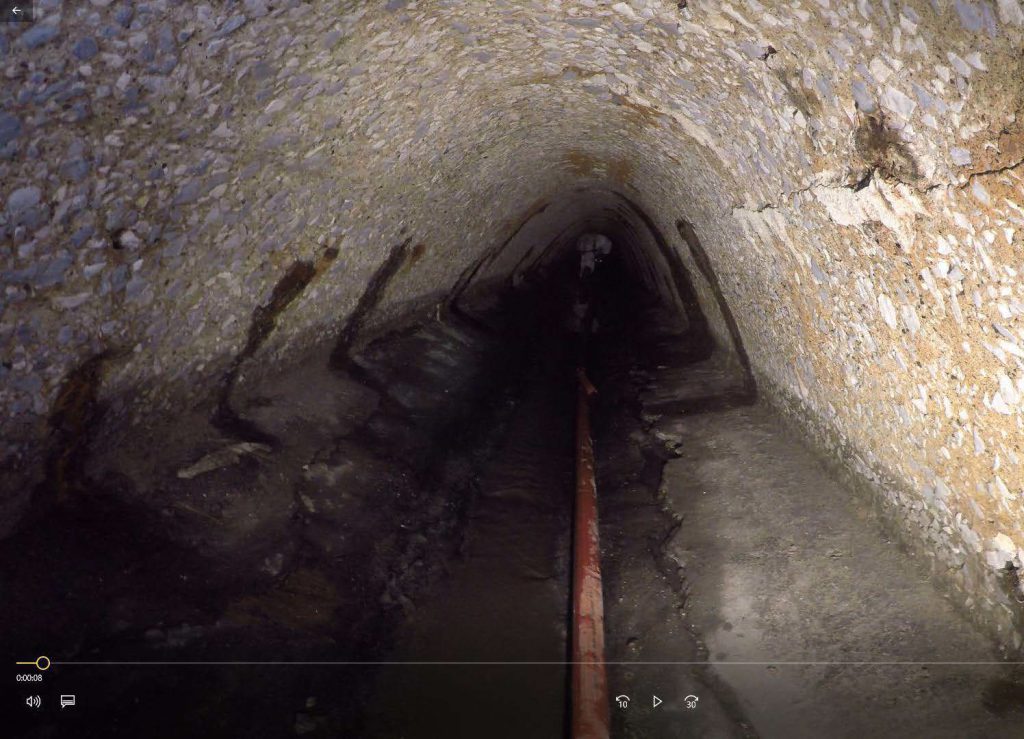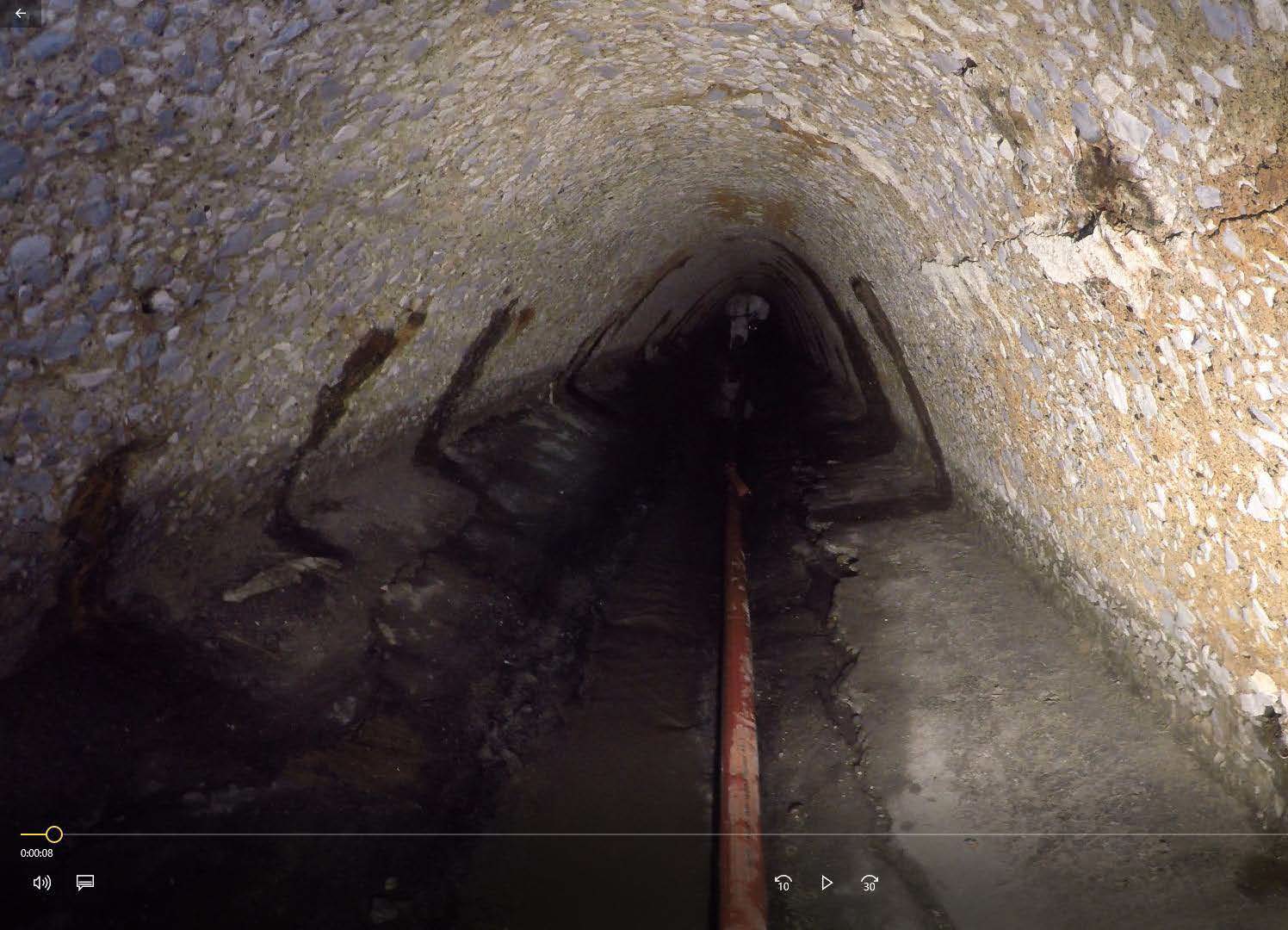
Paxton Creek Interceptor
Rehabilitation

Background:
The Paxton Creek Interceptor conveys combined sewage from over half of the City of Harrisburg, including the project area, which runs along the creek, parallel to Cameron Steet. After several thorough investigations, it was determined that the cast-in-place concrete pipe, installed in 1902, is severely compromised with visible defects (exposed rebar, cracks, and voids) throughout its 13,500-linear-foot alignment. The Paxton Creek Interceptor is vital to the overall functionality and effectiveness of Capital Region Water’s sewer collection system and must be rehabilitated. The project will rehabilitate the entire interceptor to address defects and structurally reinforce the pipe back to full strength.
Project Purpose:
Paxton Creek Interceptor rehabilitation work is critical to the sewer collection system in Harrisburg for several reasons:
- Flow Conveyance: The interceptor serves as a major conduit for transporting wastewater, including sewage and stormwater, from various parts of the city to treatment facilities.
- System Integration: The interceptor integrates multiple smaller sewer lines and tributaries into a centralized system. This consolidation enhances the overall effectiveness of the underground sewer collection network in Harrisburg.
- Increased Capacity Management: As an integral component of the sewer system, the interceptor helps manage the increased capacity of the overall network. It ensures that the flow of wastewater is controlled and directed appropriately, preventing overflows and system failures. The Paxton Creek Interceptor will be integral to the expansion of conveyance and treatment of combined sewer flows in the system.
- Flood Prevention: By effectively conveying stormwater, especially during heavy rainfall, the interceptor helps prevent local flooding and reduces the risk of sewage overflow into streets or residential areas. This is crucial for protecting public health and preventing property damage.
- Environmental Protection: The proper functioning of the Paxton Creek Interceptor helps to safeguard local waterways and ecosystems. By preventing overflows and controlling wastewater discharge, it helps maintain water quality standards and protects the environment.
The interceptor rehabilitation is one of CRW’s priority projects specified in its City Beautiful H2O Program Plan. The plan has been implemented to better manage stormwater and related pollutants, improving and protecting water quality in the Susquehanna River and its tributaries as required via a Partial Consent Decree agreement with state and federal regulators.
The project will take a Natural Stream Channel Design approach to addressing Paxton Creek’s existing ecologically impaired condition and flooding impacts by creating a linear urban green space along the targeted portion of the Paxton Creek corridor. The approach provides new economic and recreational benefits and community connectivity and redevelopment opportunities, while addressing flood control, sediment control, clean water, and habitat restoration. In that respect, the interceptor rehabilitation project, also know as the Paxton Creek Greenway Catalyst Project, is intended as a jumping off point for larger naturalization efforts. Those efforts include a comprehensive strategy to restore the natural ecological function of about 6.2 miles of the creek from Wildwood Lake through the City of Harrisburg to its confluence with the Susquehanna River.
Project Summary:
The total project budget for the Paxton Creek Greenway Catalyst Project is estimated at $24,800,372 which includes $24,500,372 for construction of the Paxton Creek Interceptor Rehabilitation Project. The remaining $300,000 is budgeted for related outreach efforts. Work is expected to take place over a timeline of June 2025 to June 2028. The Project includes sewer pipe installation, sewer manhole installation, sewer pipe rehabilitation, restoration and all other work that will be identified in the contract bid documents.
